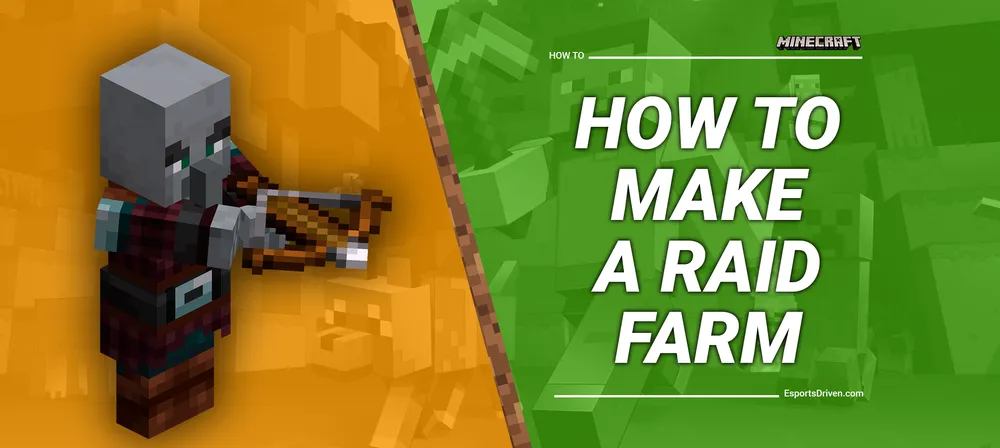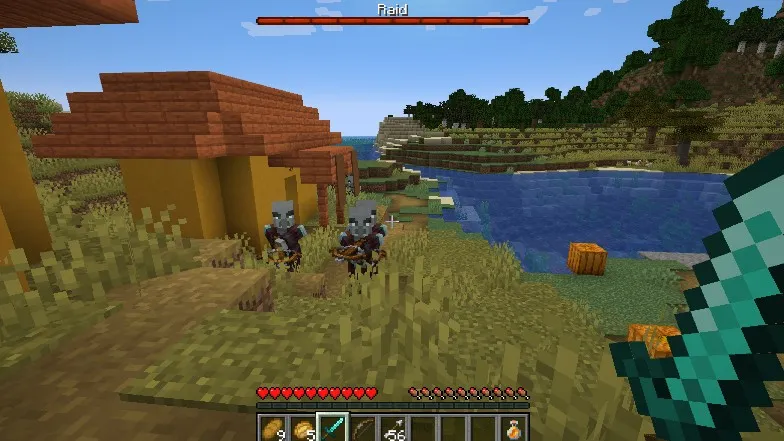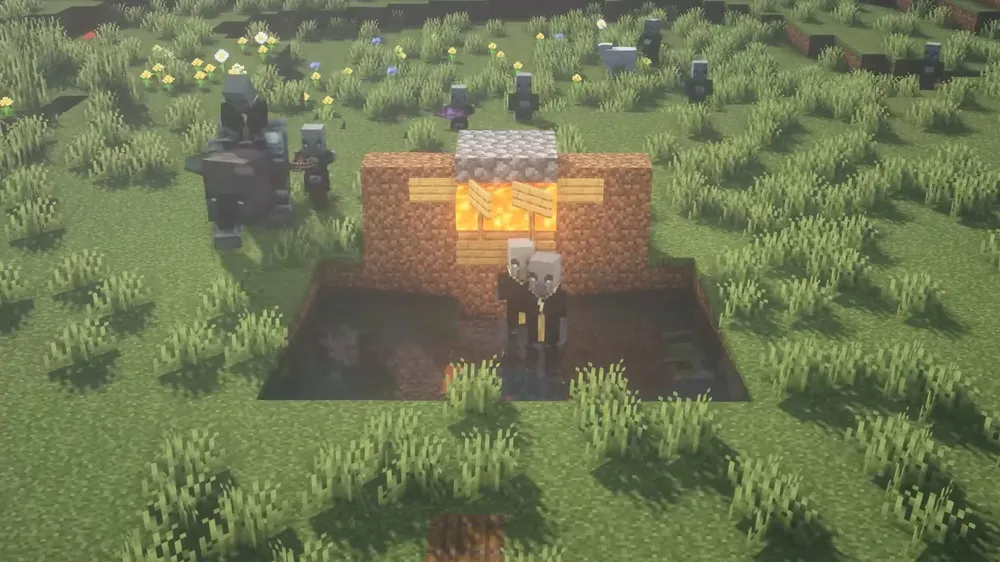Building a Successful Raid Farm in Minecraft

Welcome to your ultimate guide to mastering Minecraft's complex yet rewarding world! If you've ever wondered how to accumulate wealth and a plethora of useful items in the game, you're in the right place. Today, we're diving headfirst into the world of raid farming - a gameplay strategy that savvy Minecraft players use to amass a wealth of resources and take their game to the next level.
Raid farming? Sounds pretty intense, right? Don't worry - by the time you're done with this guide, you'll be armed with all the knowledge you need to tackle this exciting venture in the expansive universe of Minecraft.

At its core, a raid farm is a specially designed structure where you can consistently spawn and defeat raid mobs. These mobs aren't just there to make your life harder; they drop a range of valuable items when defeated. Imagine having a constant supply of emeralds, enchanted books, iron tools, and iron armor at your disposal!
But we're getting ahead of ourselves. This guide will take you on a step-by-step journey, from the fundamental mechanics of raid farming to a detailed blueprint for constructing your own farm, and finally to the sweet part - the loot you can expect.
So, buckle up, fellow Minecraft enthusiast. It's time to dive into the nitty-gritty of raid farming and uncover how you can turn a handful of blocks into a treasure trove of valuable resources!
Understanding the Basics of Raid Farming
Now that we've stirred up your curiosity, let's dive into the fundamentals of raid farming in Minecraft. Understanding the basic principles and mechanisms will make the process of building your farm smoother and more enjoyable.
In essence, a raid farm is a specially built structure meant to attract, spawn, and defeat raid mobs, which are your primary source of loot in this setup. You'll encounter various mobs like pillagers, vindicators, witches, evokers, and ravagers. Each raid mob is like a loot box on legs, carrying a wealth of valuable items for you to claim!
So, how does a raid farm work? It all begins with a village. However, this isn't your average Minecraft village bustling with activity. For raid farming, a "village" could be as small as a solitary villager with a bed. It's all you need to attract a swarm of raid mobs to your location.
The next essential feature of a raid farm is the raid spawn surface. This is where the raid mobs will appear. Keep in mind that raids cannot spawn on leaves, scaffolding, or liquids. These restrictions can actually be beneficial for you, as they can help you localize and control the raid spawn point.
The goal here is to force the raid mobs into a confined killing zone, where they can be easily defeated, and their precious loot can be harvested. You can use various methods to funnel these mobs into the desired area, including the use of water currents or other block arrangements. The choice depends on your preferred style of gameplay and the resources at your disposal.
Another critical component of the raid farm is the mechanism to acquire the 'Bad Omen' effect, which triggers the next raid. This can be accomplished by either setting up a pillager outpost converted into a trap or forcing raid captains out of the raid context, so they bestow the 'Bad Omen' effect upon their demise.
How to Build Your Own Raid Farm
Setting up a Village for Your Raid Farm
First things first, you need a village. But don't worry - you don't need a bustling settlement full of villagers. For a raid farm, a single villager coupled with a bed is all you need to trigger a raid. Find a suitable location and set up your "minimalist" village. Remember, the chosen area should be clear of leaves, scaffolding, and liquids, as they obstruct the spawn of raid mobs.
Creating the Spawning Surface for Raids
Next, you need to create a surface where the raid mobs will spawn. This surface could be the ground or an isolated, elevated platform. Whichever you choose, make sure it's away from the areas where raids can't spawn (like the leaves, scaffolding, or liquids we mentioned earlier). A good tip is to use materials like solid blocks or slabs to ensure successful raid spawns.
Designing the Killing Area or Mob Grinder
Now, it's time to construct your killing area, often referred to as the "mob grinder". The mob grinder is where the magic happens - it's where you'll be gathering your loot! This area should be designed to funnel the raid mobs into a confined space where they can be easily defeated. Using water currents can be an effective way to direct the mobs into your grinder. Remember, the grinder needs to be lethal enough to deal with the mobs, but ensure it doesn't destroy the drops - you want that loot!

Setting up a Pillager Trap
Last but not least, you need a way to get the 'Bad Omen' effect again and trigger the next raid. One effective method is converting a pillager outpost into a trap. This trap will allow you to systematically take down raid captains who spawn at the outpost, bestowing the 'Bad Omen' effect upon their demise. If you're not keen on dealing with pillager outposts, you can devise a strategy to separate raid captains from the rest during the raid, so their defeat gives you 'Bad Omen'.
Understanding Loot in Raid Farming
Emeralds and totems of undying are the shining stars of raid farming loot. Emeralds, the main currency for trading with villagers, can pile up quickly in a successful raid farm. With enough emeralds, you can almost forget about the trading costs with villagers, as you'll always have a stockpile ready.
Meanwhile, totems of undying serve as an essential lifeline during intense fights or dangerous explorations. These magical items, when held in your hand, can save you from an otherwise fatal blow, making you temporarily invincible. With a successful raid farm, you'll never have to worry about stockpiling these invaluable assets.
Additional Potential Loot
In addition to the primary drops, raid farming can provide a variety of other items. Saddles, iron axes, crossbows, ominous banners are just some of the rewards you can reap from raid farming. Witch drops, including items like sticks, gunpowder, redstone dust, glowstone dust, sugar, spider eyes, and glass bottles, also make up a significant part of the loot.
The Differences in Loot Between Java Edition and Bedrock Edition
Keep in mind that the loot you receive can vary depending on the version of Minecraft you're playing. While the Bedrock Edition allows for raid loot like emeralds, enchanted books, and iron tools, the Java Edition focuses more on mob drops from raid farming. Regardless of the version, you'll still find a treasure trove of useful items to enhance your Minecraft adventure.
As you can see, raid farming can be incredibly rewarding. By defeating the raid mobs, you gain a wealth of resources that can propel your gameplay to new heights. Remember, the more efficient your raid farm, the greater the loot. So, happy farming, and may your Minecraft pockets be ever filled with the spoils of your victories!
Conclusion
We've traversed the intricate world of raid farming in Minecraft together, and it's time to wrap up our epic journey. From understanding the basic principles of raid farming to the exciting process of building your very own raid farm and finally reaping the abundant rewards, it's been quite an adventure!
Raid farming is more than just a gameplay strategy. It's a way to unlock a new level of excitement in Minecraft. With the knowledge you've gained from this guide, you are now equipped to venture forth into the Minecraft world and create a bustling raid farm, teeming with valuable loot.












